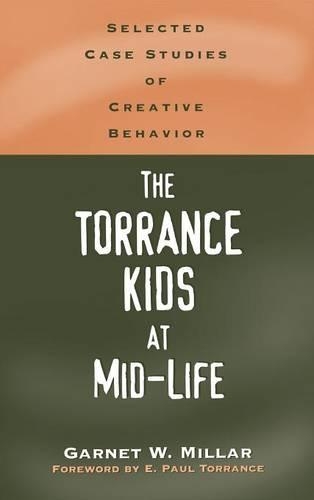
The Torrance Kids at Mid-Life: Selected Case Studies of Creative Behavior
(Hardback)
Publishing Details
The Torrance Kids at Mid-Life: Selected Case Studies of Creative Behavior
By (Author) Garnet Millar
Bloomsbury Publishing PLC
Praeger Publishers Inc
30th October 2001
United States
Classifications
Tertiary Education
Non Fiction
Cognition and cognitive psychology
Social, group or collective psychology
153.35
Physical Properties
Hardback
360
Width 156mm, Height 235mm
652g
Description
An important longitudinal study spanning over 40 years illustrating how specific test scores and other life factors affect creative achievements and individual careers. Never has there been a longitudinal study of creativity of this magnitude. The book describes the original sample of students from two Minneapolis schools in 1958 and the longitudinal study envisioned by Dr. E. Paul Torrance, then director of the Bureau of Educational Research at the University of Minnesota. It explains two follow-up period with the students in 1980 and 1998 with the view of measuring their adult creative achievements. The author in collaboration with Dr. Torrance has selected a sample of ten individuals for case study who serve to illustrate the predicitive validity of the Torrance Tests of Creative Thinking and the factors that support and sustain creativity as individuals live their lives. The case studies describe the individuals' school years, the first and second follow-up periods and an indepth interview covering topics such as early influences on creativity, career paths and transitions, creative accomplishments, validation of the "Manifesto for Children," and reflections on creativity. The study will be of great interest to psychologists, college and university teachers, counselors, educators and parents. Themes are derived from an examination of the case studies and key messages for creative living are proposed.
Author Bio
GARNET W. MILLAR is an education consultant in private practice and former Provincial Coordinator for Guidance and Counseling with the Alberta Government's Special Education Branch. For the past 16 years, he has been affiliated with the Torrance Center for Creative Studies at the University of Georgia. He has presented the annual Torrance Lecture and recently wrote the biography of E. Paul Torrance, The Creativity Man. Dr. Millar will continue to follow the careers of the individuals in the Torrance longitudinal study as they progress toward the end of their formal work and then into the period of retirement.
